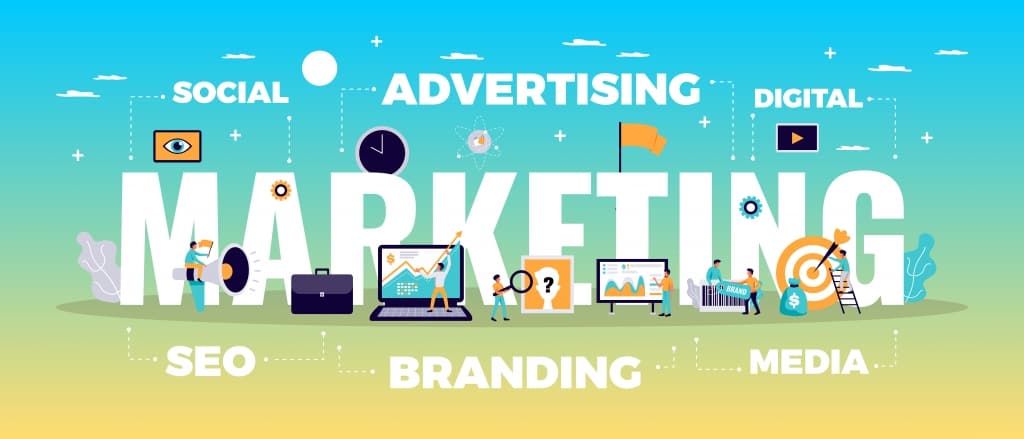Have you ever wondered why some marketing strategies work like magic? It's not just luck – it's a thoughtful, well-executed plan. In today's blog post, we're diving into the exciting world of marketing strategy examples. Whether you're a seasoned marketer looking for inspiration or a newcomer who wants to learn the basics, we've got you covered. Join us as we explore real-world success marketing strategy examples and gain valuable insights!
Table Of Contents
What Is A Marketing Strategy? Why Does It Matter?
A marketing strategy is a well-thought-out plan and approach that businesses and organizations use to achieve their marketing goals and objectives. It involves tactics, techniques, and methods designed to promote products or services, connect with customers, and drive growth for the company.
Marketing strategy is essential because it provides direction and purpose to a company's marketing efforts. Here's why it matters:
- Keeps Things Clear: It helps a business stay clear on what it wants and needs to do. This way, their marketing efforts match up with what the business wants to achieve.
- Saves Resources: It makes sure the business doesn't waste money and people on marketing that doesn't work. It helps to spend wisely.
- Stand Out: Marketing strategy helps a business be different from others. It helps find what makes them special and how to show that to the world.
- Maximizing ROI: A well-crafted strategy aims to maximize return on investment (ROI) by identifying the most cost-effective and efficient marketing channels and tactics.

15 Marketing Strategy Examples
Best Marketing Strategy Examples
1/ Coca-Cola's "Share a Coke" Campaign
Coca-Cola's "Share a Coke" campaign was a hit because it added a personal touch to their products. By printing people's names on cans and bottles, Coca-Cola encouraged consumers to share their favorite beverages with friends and family. This campaign was a success because it created a strong emotional connection between the brand and its customers, leading to increased sales and social media engagement.
2/ Nike's "Just Do It" Slogan
Nike's "Just Do It" slogan is successful because it's inspirational and memorable. It encourages individuals to take action and pursue their dreams. The campaign's long-term success is due to its universal and timeless message, which resonates with people of all ages and backgrounds.
3/ Dove's "Real Beauty" Campaign
Dove's "Real Beauty" campaign challenged traditional beauty standards by featuring real women in their advertisements. This campaign succeeded because it resonated with a broader cultural shift towards body positivity and self-acceptance. It not only promoted a positive message but also differentiated Dove from competitors, creating a strong emotional bond with consumers.
Digital Marketing Strategy Examples
4/ Oreo's Real-Time Marketing During Super Bowl XLVII
Oreo's "Dunk in the Dark" tweet during the 2013 Super Bowl blackout is a classic example. It succeeded because it was timely and creative, capitalizing on a real-time event to capture public attention. This quick thinking made Oreo's brand memorable and relatable.
5/ Airbnb's User-Generated Content
Airbnb encourages its users to share their travel experiences and accommodations through user-generated content (UGC). It succeeds by leveraging authentic content that builds trust and connects with potential travelers, making the platform more appealing to both hosts and guests.
Social Media Marketing Strategy Examples
6/ Wendy's Twitter Roasts
Wendy's, the fast-food chain, gained attention and engagement on Twitter by responding to customer inquiries and comments with witty and humorous comebacks. This strategy succeeded because it humanized the brand, generated viral conversations, and positioned Wendy's as a fun and relatable fast-food option.

7/ Oreo's Daily Twist Campaign
Oreo celebrated its 100th anniversary by posting daily images on Facebook and Twitter featuring Oreo cookies creatively arranged to mark historical events or holidays. This campaign succeeded because it combined timely content with a recognizable product, encouraging shares and user engagement.
8/ Burberry's Snapchat Campaign
Burberry utilized Snapchat to provide exclusive behind-the-scenes content of its London Fashion Week events. This strategy succeeded by creating a sense of exclusivity and immediacy, appealing to a younger and trend-focused demographic.
Sales Marketing Strategy Examples
9/ Amazon's "Recommendations" Strategy
Amazon's personalized product recommendations, based on users' browsing and purchase history is a well-known sales strategy. It succeeds by enticing customers with items they're likely interested in, increasing the average order value, and driving more sales.
10/ McDonald's "Happy Meal" for Children
McDonald's includes toys with their "Happy Meal" offerings to appeal to children. This sales strategy attracts families to their restaurants, increases overall sales, and builds brand loyalty from a young age.

Product Marketing Strategy Examples
11/ Apple's iPhone Marketing Strategy
Apple's iPhone marketing strategy focuses on creating a sense of exclusivity and innovation. By emphasizing sleek design, user-friendly interfaces, and the "it just works" concept, Apple has built a loyal customer base. This strategy succeeds because it taps into consumers' desire for cutting-edge technology and the status associated with owning an iPhone.
12/ Nike's Air Jordan Brand
Nike's collaboration with basketball legend Michael Jordan created the Air Jordan brand. This strategy succeeds by associating the product with a sports icon and creating a dedicated fanbase.

13/ Tesla's Premium Electric Cars
Tesla's marketing strategy focuses on positioning electric vehicles as high-performance, luxury cars. This approach succeeds by differentiating the brand from traditional automakers and appealing to environmentally conscious and tech-savvy consumers.
Marketing Strategy Examples For Small Business
14/ Dollar Shave Club's Viral Video
Dollar Shave Club's humorous and edgy video advertisement went viral, leading to millions of views and a surge in subscribers. This strategy succeeded because it used humor and a straightforward value proposition to resonate with its target audience and was easily shareable, amplifying its reach.
15/ Warby Parker's Try-Before-You-Buy Model
Warby Parker, an online eyewear retailer, offers a try-before-you-buy program where customers can select frames to test at home. This strategy succeeded by addressing a common pain point in online eyewear shopping—uncertainty about fit and style—and building trust by letting customers experience the product firsthand.
Final Thoughts
Marketing strategy examples highlight the diverse approaches businesses use to connect with their target audiences, drive sales, and build lasting relationships.
Now, as we've explored these marketing strategies, remember that AhaSlides can be your ally in this exciting journey. AhaSlides simplifies the process of creating interactive and engaging presentations, quizzes, and surveys, enabling you to communicate your marketing strategies effectively and receive valuable feedback from your audience.
Frequently Asked Questions
What is an example of a marketing strategy?
Example of a marketing strategy: Offering a limited-time discount to increase sales during a holiday season.
What are the 4 main marketing strategies?
4 main marketing strategies: product differentiation, cost leadership, market expansion, customer-centric focus
What are the five 5 common marketing strategies?
Content marketing, social media marketing, email marketing, influencer marketing, search engine optimization (SEO)







